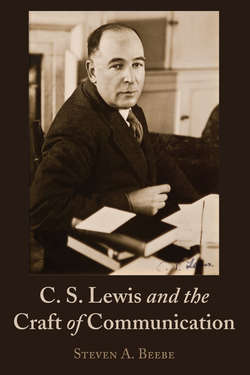Читать книгу C. S. Lewis and the Craft of Communication - Steven Beebe - Страница 9
На сайте Литреса книга снята с продажи.
Contents
ОглавлениеForeword by Jerry Root
Preface
Acknowledgements
1 The Case for C. S. Lewis as Master Communicator
A Popular Communicator
A Professional Communicator
A Professor of Communication
HI TEA: A Preview of Lewis’s Communication Lessons
2 The Making of a Master Communicator
His Family: Flora, Albert, and Warnie
The Education of a Master Communicator
Boarding Schools
Arthur Greeves: First Friend and Intimate Confidant
The Great Knock
Oxford and the Dreaming Spires
The Great War
Mrs. Moore and Lewis’s Audience
J. R. R. Tolkien: Oxford Friend and Colleague
A Most Reluctant Conversion
Surprised by Marriage: Finding Joy and Observing Grief
A Well-Read Mind Awake
3 C. S. Lewis’s Big Ideas
Longing: The Quest to Find Home
The Tao: Universal Truth
Christianity: Lewis’s Primary Sense-Making Lens
Language: Metaphorical Shaper of Thought and Meaning
Summary: Lewis’s Big Ideas
4 Holistic
Principle One: Effective Communicators Are Holistic
One Style: Communicating for Both the Eye and the Ear
Two Lewises: The Integration of Reason and Imagination
Three Methods: The Integration of Rhetoric, Dialectic, and Poetic
Rhetoric
Dialectic
Poetic
Summary: The “H” of “HI TEA”: The Principle of Being Holistic
5 Intentional
Principle Two: Effective Communicators Are Intentional
The Meaning of Meaning
Evidential Meaning
Psychological Meaning
Empirical (Symbolic) Meaning
Master of Invention
Clarity
Style
Summary: The “I” of “HI TEA”: The Principle of Being Intentional
6 Transpositional
Principle Three: Effective Communicators Are Transpositional
Translation: A Prelude to Transposition
Transposition: Communicating from Higher to Lower, Richer to Poorer
Visual Metaphor: The Technique of Transposition
Summary: The “T” of “HI TEA”: The Principle of Transposition
7 Evocative
Principle Four: Effective Communicators Evoke Emotions
Evoke by Selecting the Right Word
Evoke by Using Comparison
Evoke by Placing Us in the Middle of Things
Evoke by Telling Stories
Evoke by Using Myth
Summary: The “E” of “HI TEA”: The Principle of Evoking Emotions
8 Audience Centered
Principle Five: Effective Communicators Are Audience Centered
Misanalysing His Audience: Learning from Communication Failures
Editing for the Audience
Relating to the Audience
Speaking to an Audience
Being a Good Audience Member
Summary: The “A” of “HI TEA”: The Principle of Being Audience Centered
9 How to Communicate Like C. S. Lewis
How to Be Holistic
Communicate for the Eye and Ear
Use Interesting and Varied Supporting Material
Communicate to the Whole Mind
How to Be Intentional
Have Something to Say
Develop a Clear Communication Objective
Use Language Precisely
How to Be Transpositional
Use Comparisons Skillfully
Communicate for the “Mind’s Eye”
Craft Effective Visual Metaphors
How to Be Evocative
Tell Stories
Get Messages Out of People
Master Nonverbal Communication Skills
How to Be an Audience-Centered Communicator
Enhance Your Credibility
Select the Appropriate Communication Channel
Analyze and Adapt to Your Audience
Remember HI TEA
Be a Holistic Communicator
Be an Intentional Communicator
Be a Transpositional Communicator
Be an Evocative Communicator
Be an Audience-Centered Communicator
Index
